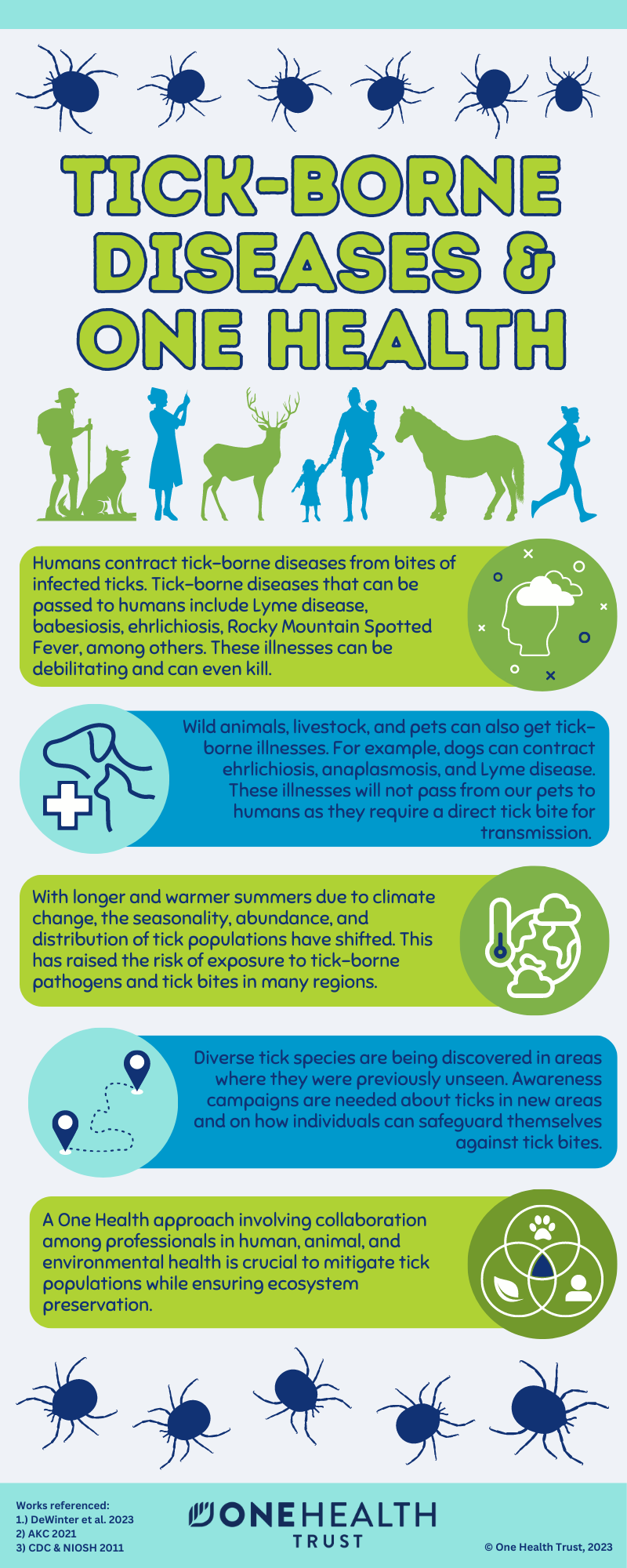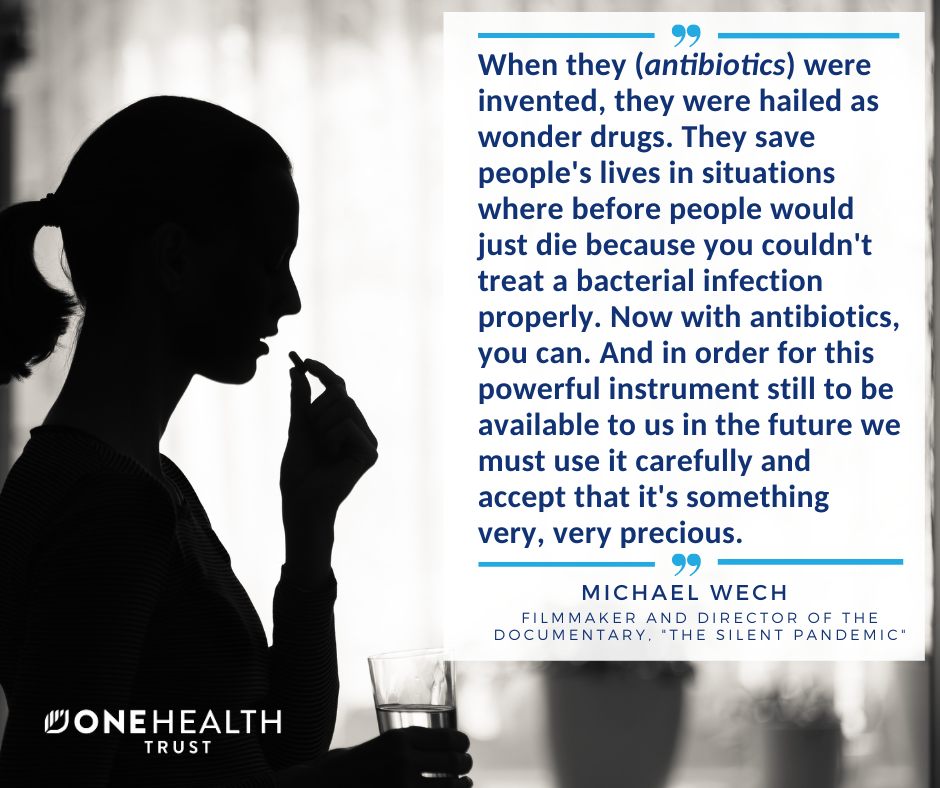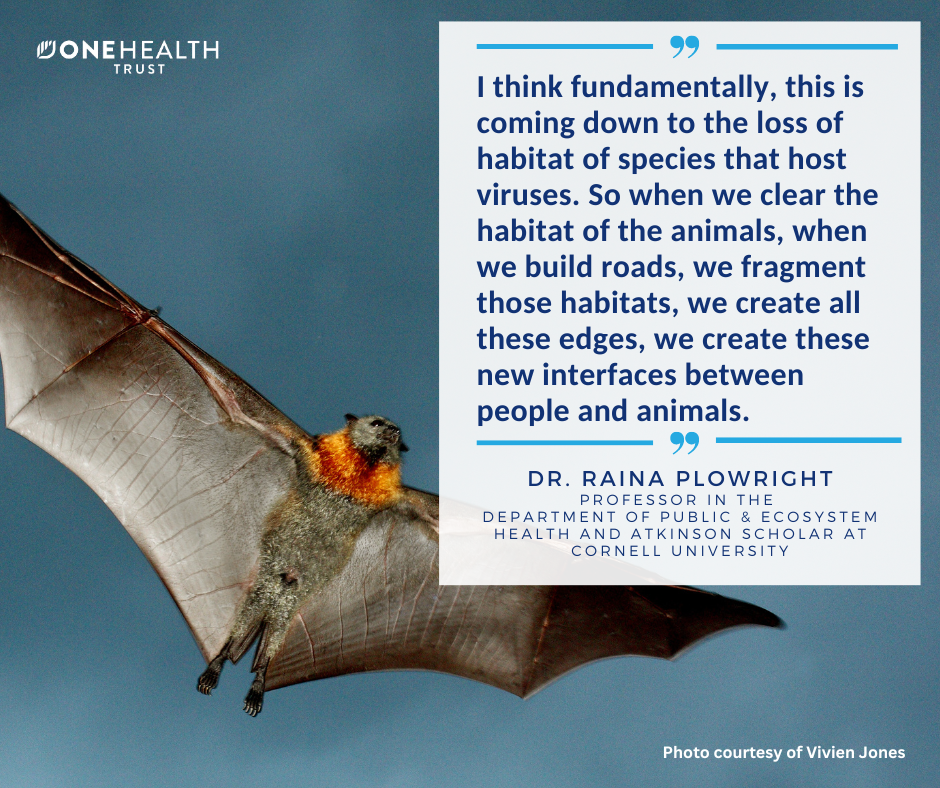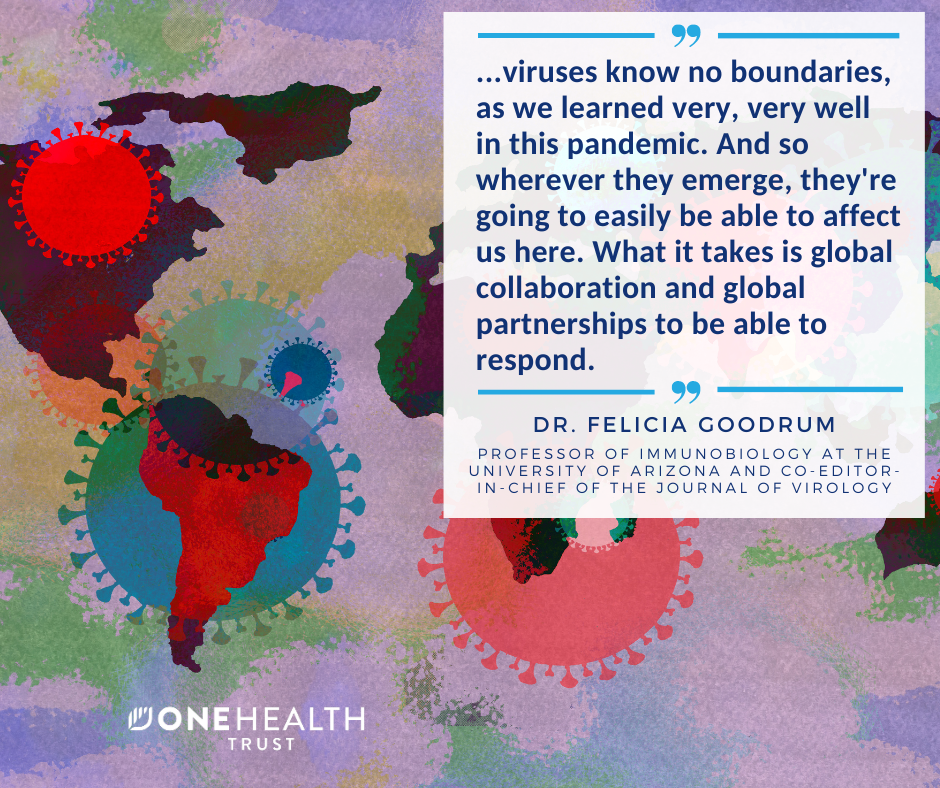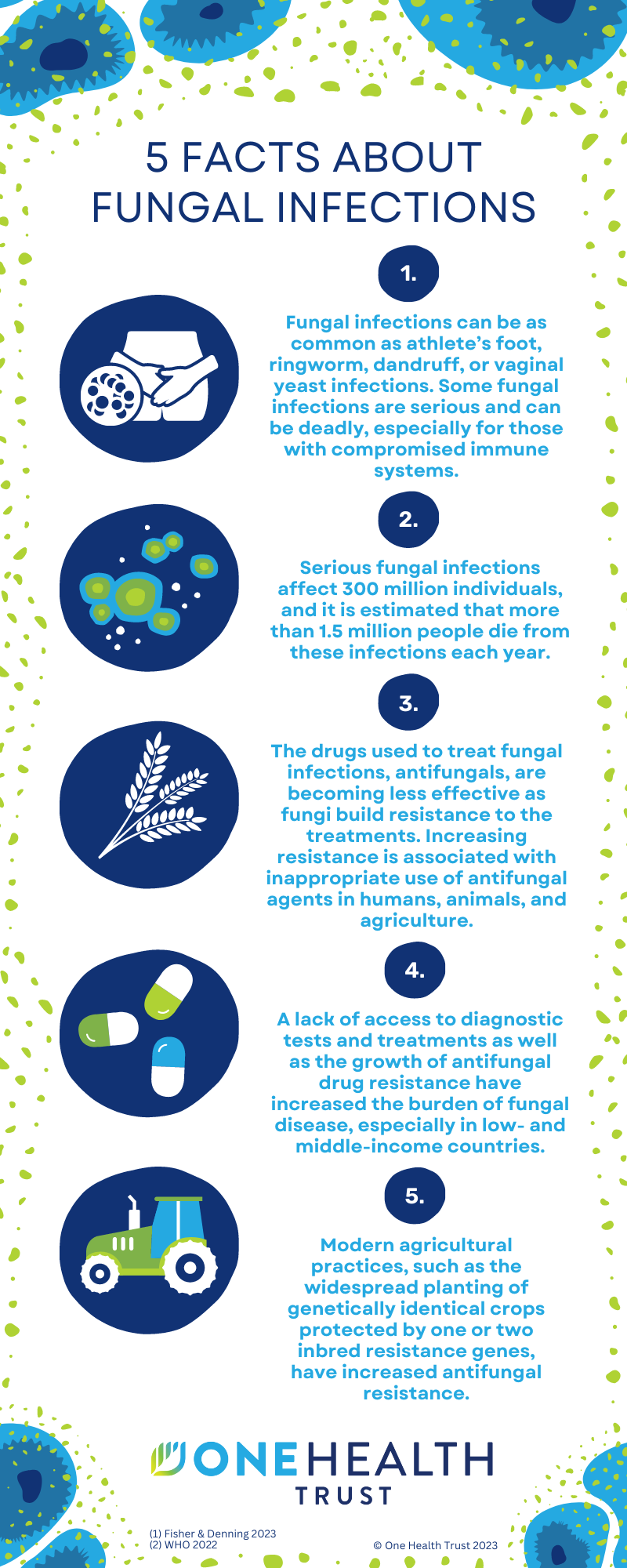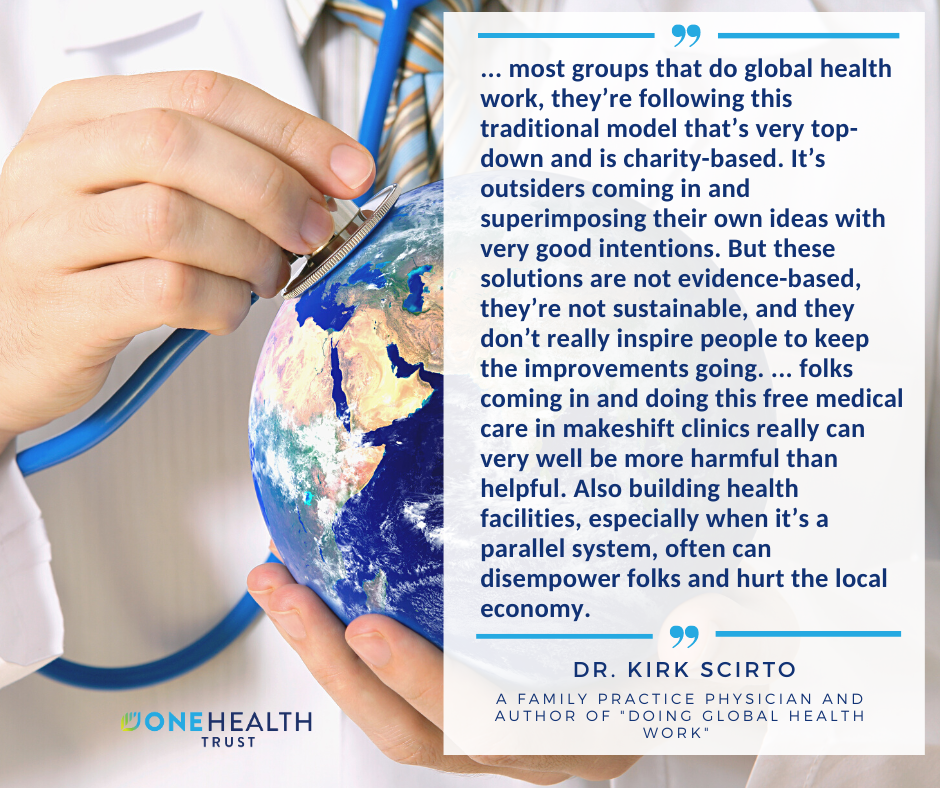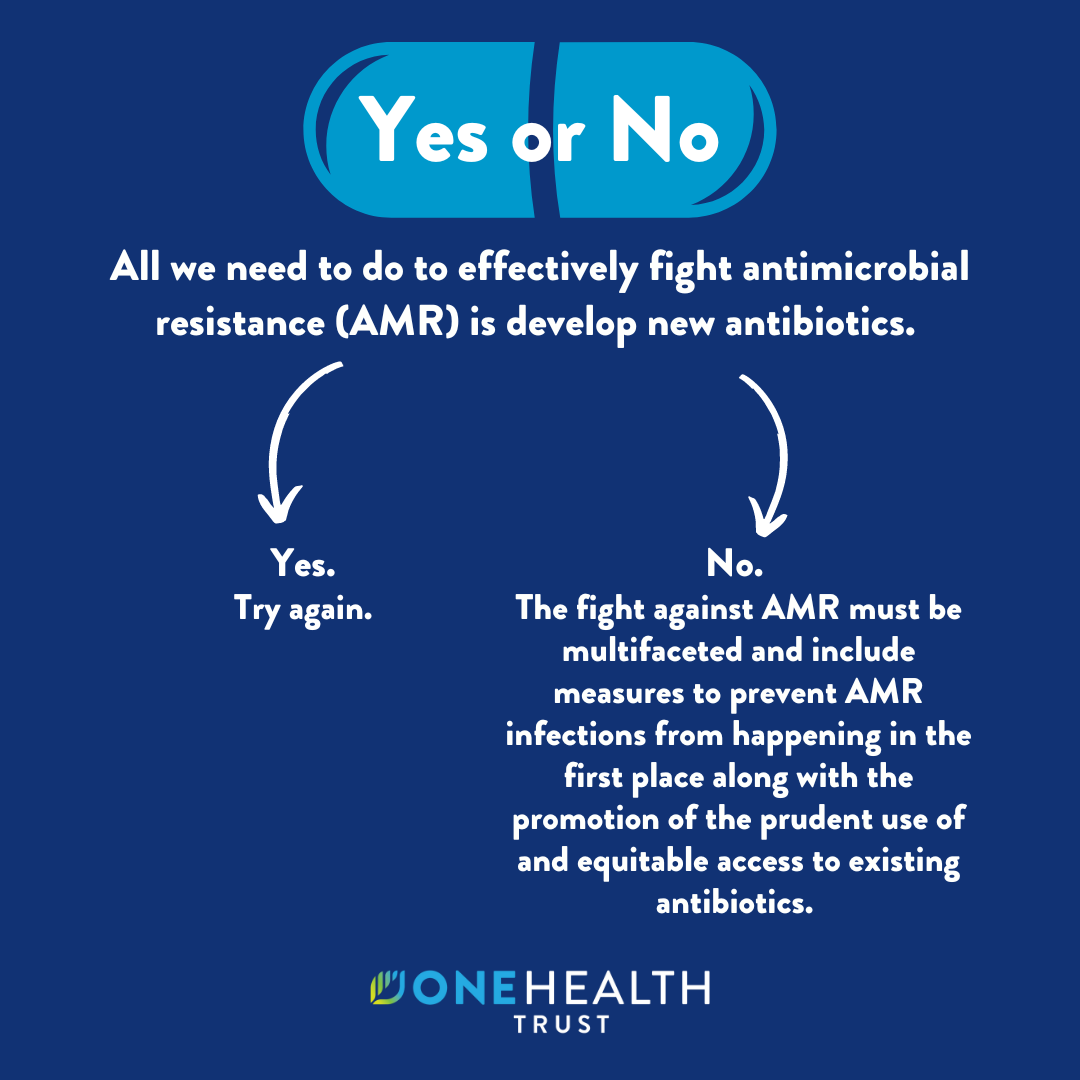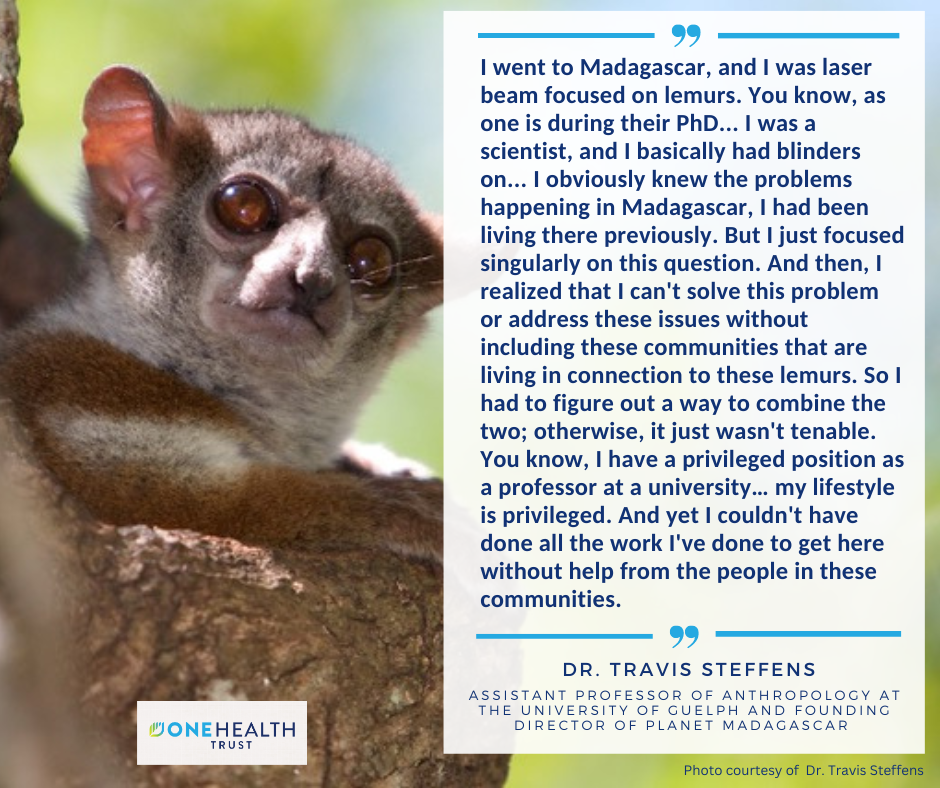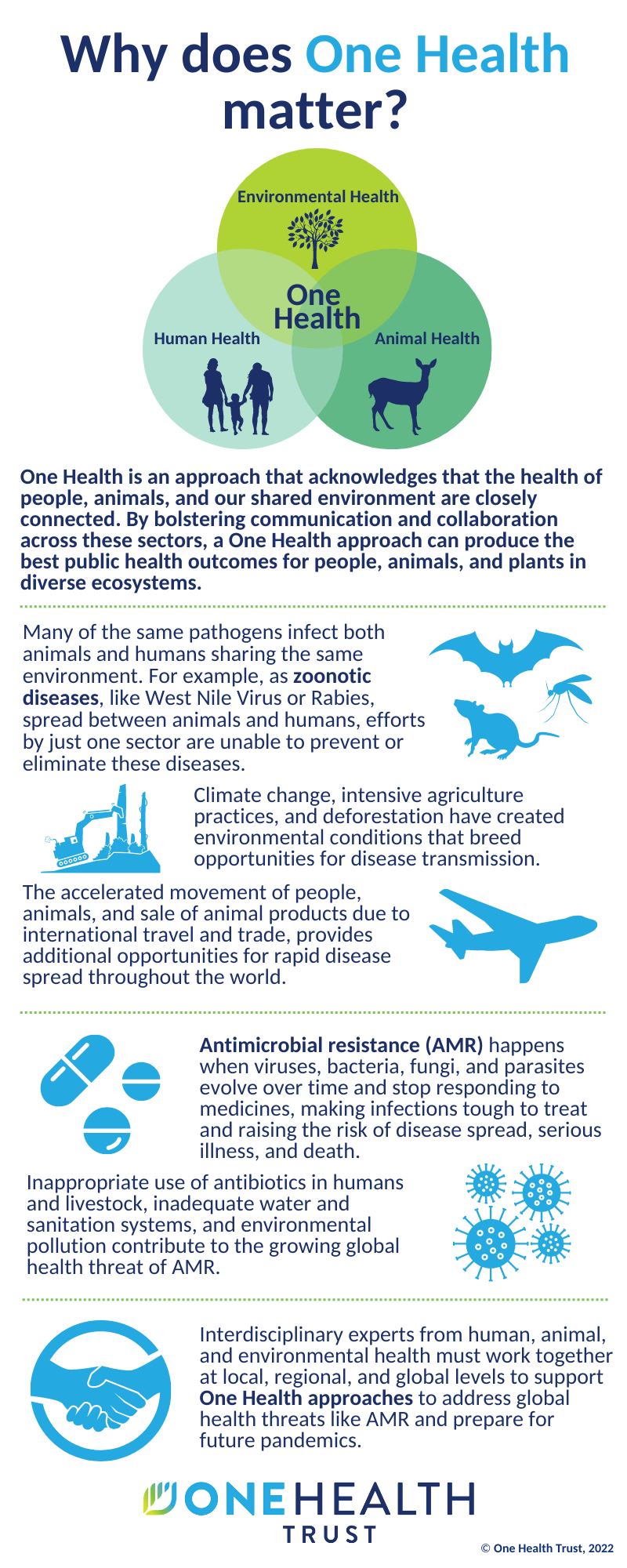
May 17, 2022
Why does One Health matter?
One Health is an approach that acknowledges that the health of people, animals, and our shared environment are closely connected. By bolstering communication and collaboration across these sectors, a One Health approach can produce the best public health outcomes for people, animals, and plants in diverse ecosystems.
Many of the same pathogens infect both animals and humans sharing the same environment. For example, as zoonotic diseases, like West Nile Virus or Rabies, spread between animals and humans, efforts by just one sector are unable to prevent or eliminate these diseases.
Climate change, intensive agricultural practices, and deforestation have created environmental conditions that breed opportunities for disease transmission.
The accelerated movement of people, animals, and sale of animal products due to international travel and trade, provides additional opportunities for rapid disease spread throughout the world.
Antimicrobial resistance (AMR) happens when viruses, bacteria, fungi, and parasites evolve over time and stop responding to medicines, making infections tough to treat and raising the risk of disease spread, serious illness, and death.
Inappropriate use of antibiotics in humans and livestock, inadequate water and sanitation systems, and environmental pollution contribute to the growing global health threat of AMR.
Interdisciplinary experts from human, animal, and environmental health must work together at local, regional, and global levels to support One Health approaches to address global health threats like AMR and prepare for future pandemics.

